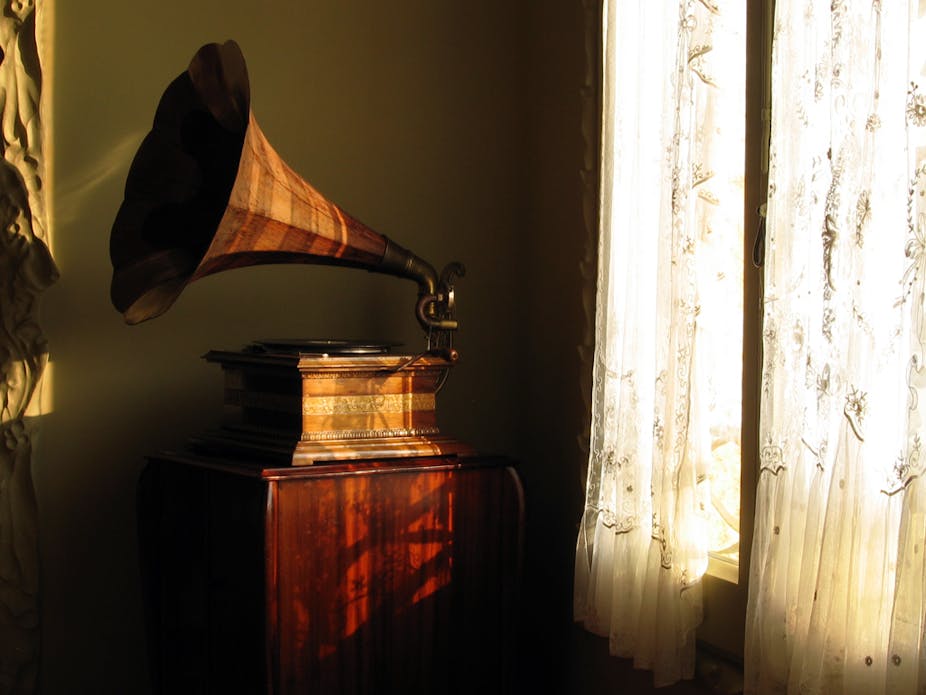There’s no shortage of professional critical opinion about music – a wealth of blogs and websites, plenty of column inches in the weekend newspapers. We’re bound to see a plethora of articles around the Brit Awards; who we should look out for, who won what, if they deserved it. But this doesn’t tell us much about how people respond to music in their day-to-day lives.
I am involved in a project that is attempting to capture these listening experiences. A collaboration between the Open University and the Royal College of Music, we are gathering accounts of listening to music of all kinds, from any historical period or culture.
These accounts document what people listened to, in what circumstances, what they thought about it, how it made them feel. The heart of the project is the database, which is available to the public both to search and to contribute to. What place does music have in our lives?
Florence Farmborough, for example, was a World War I nurse who kept a diary in which she described evenings at her field hospital, when, after many hours of treating the dying and the appallingly badly injured:
Doctors & officers from our regts. would come & sit awhile … not many minutes would elapse before the strains of a guitar would break softly on the air – & a finely modulated voice would sing us songs of our hearts’ desire … in the abnormal, nomadic, wearying, ugly life that must of need be ours at such a time music was a vital necessity … it was a life-giving nourishment to the soul.
Not that all listening experiences are so positive. A friend of the painter John Constable remembered him whispering at a musical party:
If these people were to make such a noise before your door or mine, we should send for the police to take them away.
But while such accounts may be fascinating, moving or amusing in their own right, their potential usefulness to researchers becomes far greater when they are part of a mass of sources, a map of our musical memories and experiences that can be searched for trends and patterns, and interrogated from different perspectives.
Such a body of data would represent a significant expansion of the sources that music research relies on. It could prove invaluable in a variety of areas – reception studies, research into repertoire, performance practice and performance contexts, music psychology, social and cultural history, and sociology, to name perhaps the most obvious.
It’s a question of capturing the listening experiences that professional music criticism misses. The voices of “ordinary” people offer a perspective distinct from professional reviewers, a new slant on how music has been received and understood. This doesn’t mean a blanket ban on all journalistic writing – we’re just not collecting the writings of music critics.
We also hope to provide evidence of the consumption of music in a range of social, historical and geographical contexts. Especially interesting to consider will be what the database might tell us about the impact of technology and how it has changed the place of music in society.
Joseph Conrad mentions in 1898 that he is listening to Paderewski on the phonograph, for example. He doesn’t say what he thinks about the performance or the recording quality, but even very basic information such as this, gathered en masse, can help map the spread of new technologies – the rate and geographical reach, who bought it, and the repertoire recorded and distributed.
Such writings often shed light, whether consciously or inadvertently, on performance contexts and practices. They can tell us what listeners value in the performances of musicians – sometimes in considerable analytical detail, sometimes in quite simple terms.
And we’re not only concerned with historical accounts – contemporary accounts are just as valuable, whether in pointing to new trends and patterns, or in confirming historical ones. Recently, for example, Jane Maher wrote in The Guardian about “how the Rolling Stones eased my bereavement”. She talks about her unexpected discovery of the therapeutic power of rock music, citing “the clanging density of the best of the Stones” and its “cathartic release”.
It’s not difficult to see the value of such a body of data for academics, but it also has potential in other areas. A broader and deeper range of evidence of musical reception and performance practice has enormous relevance to musicians researching for their performances.
And a better understanding of how and why music matters in everyday lives may influence the decisions of cultural policy makers. It also points to the possibility of a much more accessible starting point for teaching practical music, one that is rooted in the intimate listening experience of the individual.

